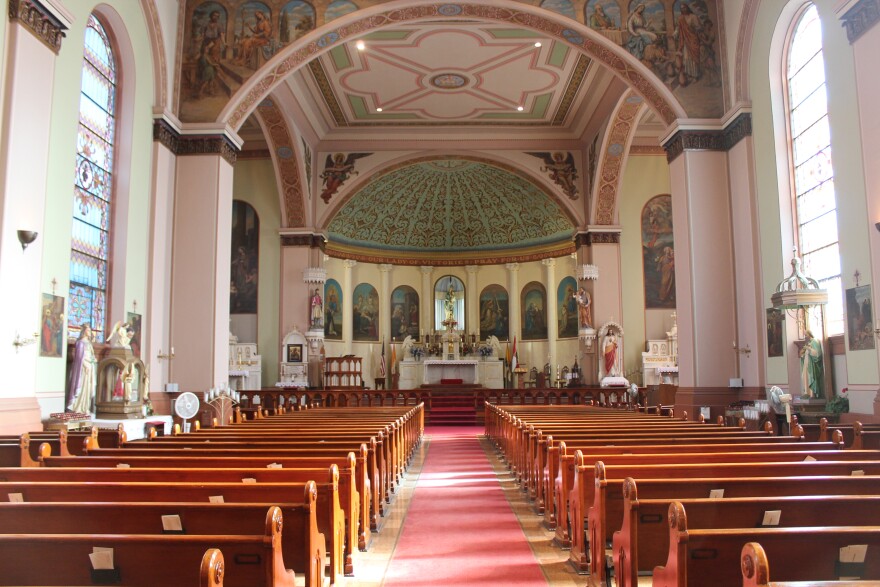St. Louis is a city built on immigration – from the early French settlers, to the Germans and Irish in the 1800s, to the more modern immigration of Bosnians and Southeast Asians.
While there have been numerous waves of immigration into St. Louis, the welcome extended by existing religious groups to new immigrants has remained fairly consistent throughout St. Louis' 250 year history.
Providing Resources
The International Institute of St. Louis provided many resources for recent immigrants, from English classes, to help with job placement and other services. Anna Crosslin, the organization's president and CEO, said that religious groups play a large role in helping immigrants settle into an area.
These religious groups not only provide secular aid, but also help people preserve parts of their culture. She said that the Pakistani Islamic community in St. Louis was helpful when Bosnians first began arriving – even sending buses to pick up people for services.
Crosslin said that the Bosnian Muslims generally were more “secular” when they arrived, and the Islamic community helped them to relearn their religious practices.
Akif Cogo, a Bosnian who lives and works here in St. Louis, said the existing community was instrumental in promoting the faith of Bosnians.
“They were providing food, shelter, even some temporary assistance for them, and they were actually the ones who brought in Imam Hasic from Canada, over to serve as imam for the Bosnian community.”
Many religious organizations are founded to help those in need. In St. Louis, these groups exist within all denominations.

Msgr. Michael Witt, professor of church history at Kenrick-Glennon Seminary, recounted an experience he had with a group of Bosnian women who came seeking aid at his parish, St. Mary Magdalen Catholic Church.
He said neither he nor his secretary could understand the women; and as the women were about to leave in frustration, one of the older women said “Don’t forget the potatoes," in German, to one of the younger girls.
This was an important moment because Witt is fluent in German, and the Bosnian women had lived in Germany prior to coming to the U.S. Once the language barrier was breached, the parish was able to provide the women with the resources they needed.
Witt then asked why the women had decided to come to America.
“She got very serious and looked at me, and she said, ‘If I spent my entire life in Germany I would never be a German and neither would my children,” Witt said. “And she said, “But here, when I learn English, I will be as American as you.”
Preserving Traditions
The Islamic community in St. Louis is not the only group that is working with more recent immigrants to preserve religious history and tradition.
Rabbi Hyim Shafner, of Bais Abraham, said his Orthodox congregation has worked with the children of Israeli immigrants in a similar fashion. They help American-born Israeli youth engage with their Jewish culture.

Shafner said his congregation opened “a once-a-week Sunday-morning school for them to teach them to read and write Hebrew, and to try and connect them to Jewish knowledge and Jewish tradition.”
St. Mary of Victories, the second oldest Catholic Church in St. Louis, has played host to many different immigrant groups throughout its more than 170-year history.
Max Kaiser, historian and long-time member of the church, said St. Mary was founded to be a German parish, but has, at some point, had Lebanese immigrants using the church for Maronite rite masses, and currently holds an 11 a.m. Sunday morning mass for the Hungarian population of St. Louis.
This Sunday mass features songs and prayers in Hungarian, and while the two distinct populations (the Hungarian and a general mass) at the church have not united their traditions, both inhabit the space equally.

Interfaith Partnerships
Monsignor Witt said St. Louis is much different than other cities in the way that religious groups interact.
“St. Louis has been a very rich city for religious diversity and respect,” Witt said. “As you look at the history of St Louis the one thing that doesn’t go over very well here is criticism of religious groups.”
He said that an anti-Catholic preacher was once expelled from the city by other Christians and that a Jewish congregation was able to settle in an area where it was originally not welcomed because Catholics advocated for them.
This does not mean that relations have been perfect, but interaction among religions has been basically positive and goes beyond simply getting along. Many religious organizations have been brought together as they work toward the common goal of helping new immigrants settle into St. Louis.
Imam Muhamed Hasic is the leader of the Islamic Community Center and president of the Interfaith Partnership of Greater St. Louis. He said the interfaith partnership works so well together because religious practices are only one small aspect of a person’s life.
He believes it is the other aspects of life that truly bring religious groups of varied backgrounds together to help people with non-religious needs.

“Every human being is looking for these same things,” Hasic said. “So it doesn’t matter if you are black or white or you are Muslim or Christian or a Jew or you are atheist or a believer. It is really these things in the public life that connect us so much and so strongly.”
Crosslin said she is not surprised by the interfaith relationships that exist in St. Louis, as the religious organizations share the same ultimate goal: “to have a joyous and inclusive community that celebrates God.”




